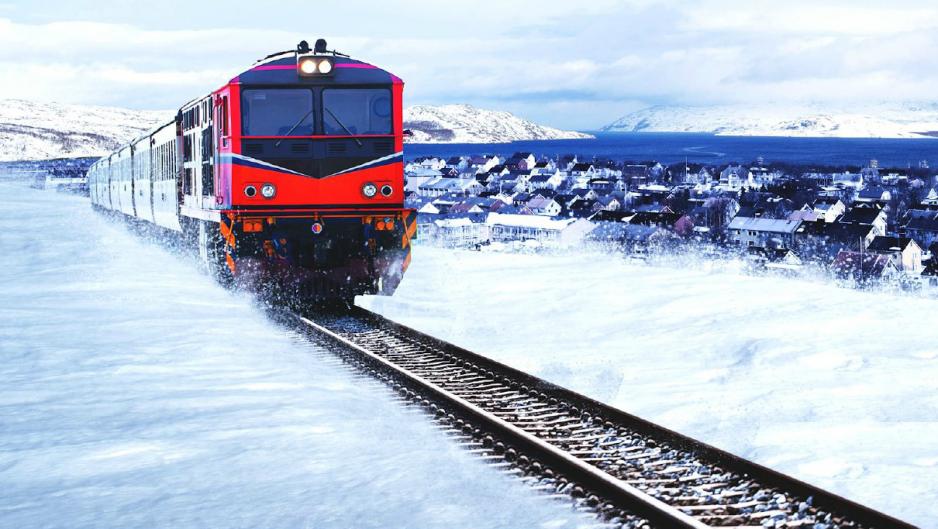Thumbs Down for the Arctic Railway

The Finnish-Norwegian working group that has assessed the possibilities for a railway between Kirkenes and Rovaniemi have not found much to support the hopes and desires of those favoring a railway. (Illustration: Sør-Varanger Utvikling)
The Finnish-Norwegian working group investigating the idea of an Arctic Railway have not found much to support such a railway, according to the working group report.
The list of obstacles to a potential railway between Kirkenes and Rovaniemi is both long and hard. Large costs, too small cargo amounts, existing railways with no extra capacity, environmental concerns, considerations towards indigenous peoples, lack of connection to Europe.
At least if one is to believe the recent report from the Finnish-Norwegian working group that has investigated the idea’s chances of being realized.
Negative throughout
To the optimists, the report’s conclusions appear negative throughout, even though the working group has pointed out all the way that it has worked with uncertain and preliminary figures and that the projections for future development are surrounded with insecurity.
The report concludes rather definitely that given current estimates for future cargo transport volumes, none of the proposed new railway lines between Norway and Finland appear economically viable.
It refers to amongst others the fact that maintenance costs alone for such a railway would require an annual transport volume of at least 2.5 million tons. Such volumes are nowhere near what projections indicate unless cost factors for various transport solutions are significantly changed, the report states.
Little capacity already
The report also points out obstacles in the form of existing railway lines, since the purpose of the Arctic Railway would be to connect to the European network and market.
The idea is to have one continuous transportation line from the Northern Sea Route (north of Russia to Asia) through the port of Kirkenes, then to Rovaniemi, Helsinkin and through a (yet non-existing) tunnel to Tallinn and onwards to central European markets.
The working group report argues that there is already insufficient capacity in the southern parts of the Finnish railway network (Helsinki – Oulu), in particular between Tampere and Helsinki.
State financing only option
The working group continuously points out that a potential Arctic Railway should be considered in light of what possibilities there are at both ends of the line and that for the foreseeable future, it is not clear what exactly that may be.
As for financing the railway, it states clearly that the only option will be the states’ budget, a publicly owned company.
Private financing could have been an option if the project were to provide a surplus that could cover the expenses, however, at present, the working group does not consider that a viable alternative.
“Whether there are private investors who would be willing to cover a significant share of the financing that is necessary, is most uncertain”, the working group writes.
Sami rights and environmental concerns
Finland and Norway have very different planning processes and horizons for transport projects. This contributes to complicating the project further, in the eyes of the working group.
Regards to both the natural environment and not to mention Sami interests in the construction area in question also lead the working group to be less optimistic about the likelihood of the project being realized in the foreseeable future.
If one were to proceed with the plans, Sami interests and natural environment stakeholders must be involved from the very onset of the planning process.
International laws as well as national legislation in both Finland and Norway provide clear directions for relevant procedures to apply in order to secure Sami rights both when it comes to lands, language and culture, the report says. The report was presented last Monday.
This article originally appeared in Norwegian and has been translated by HNN's Elisabeth Bergquist.
